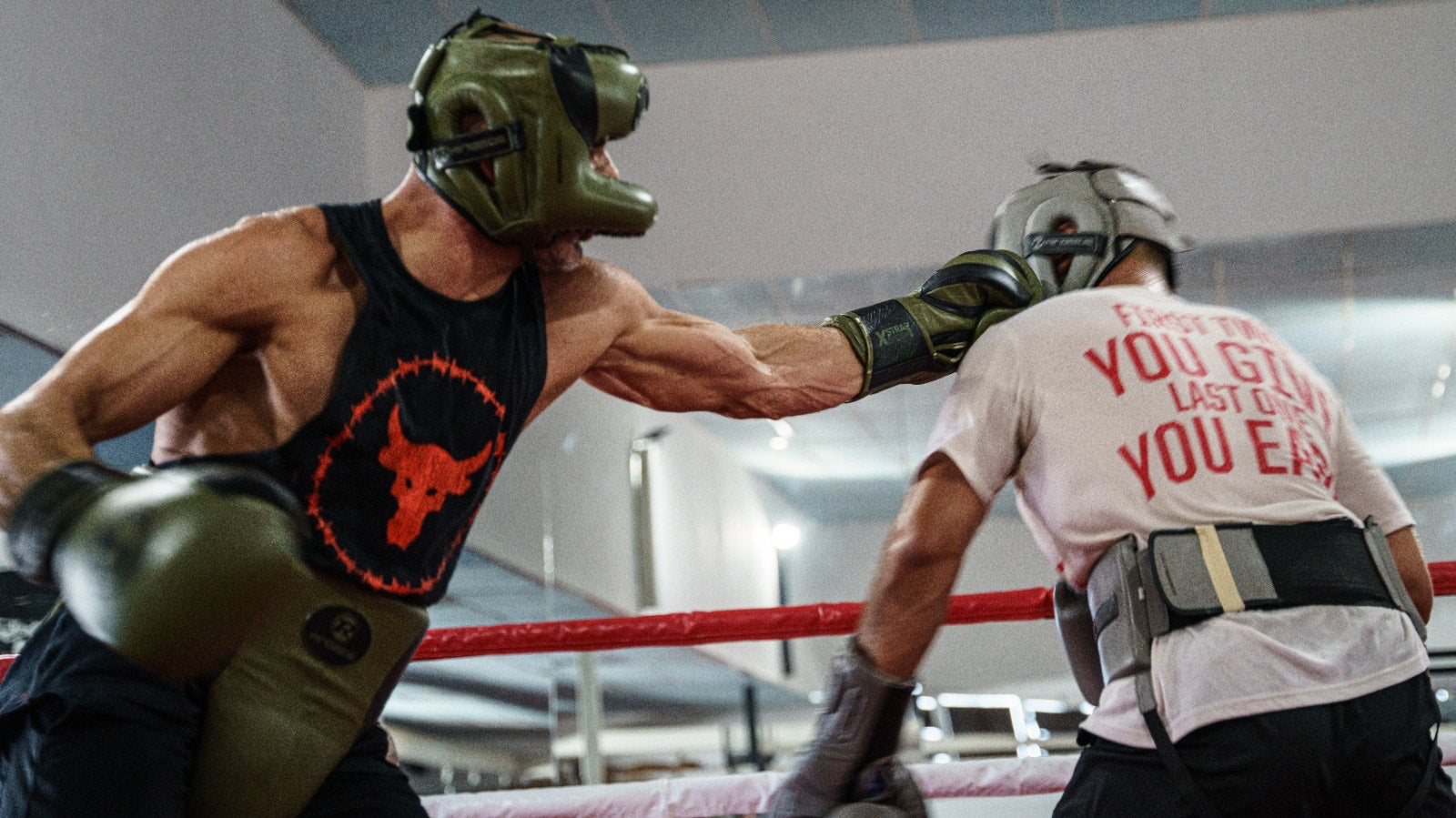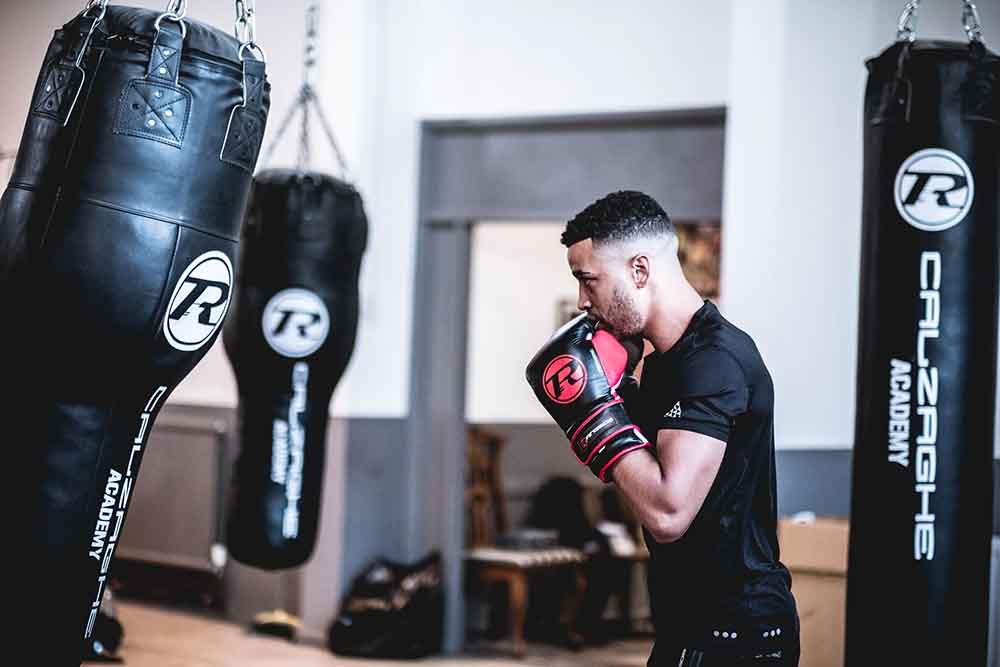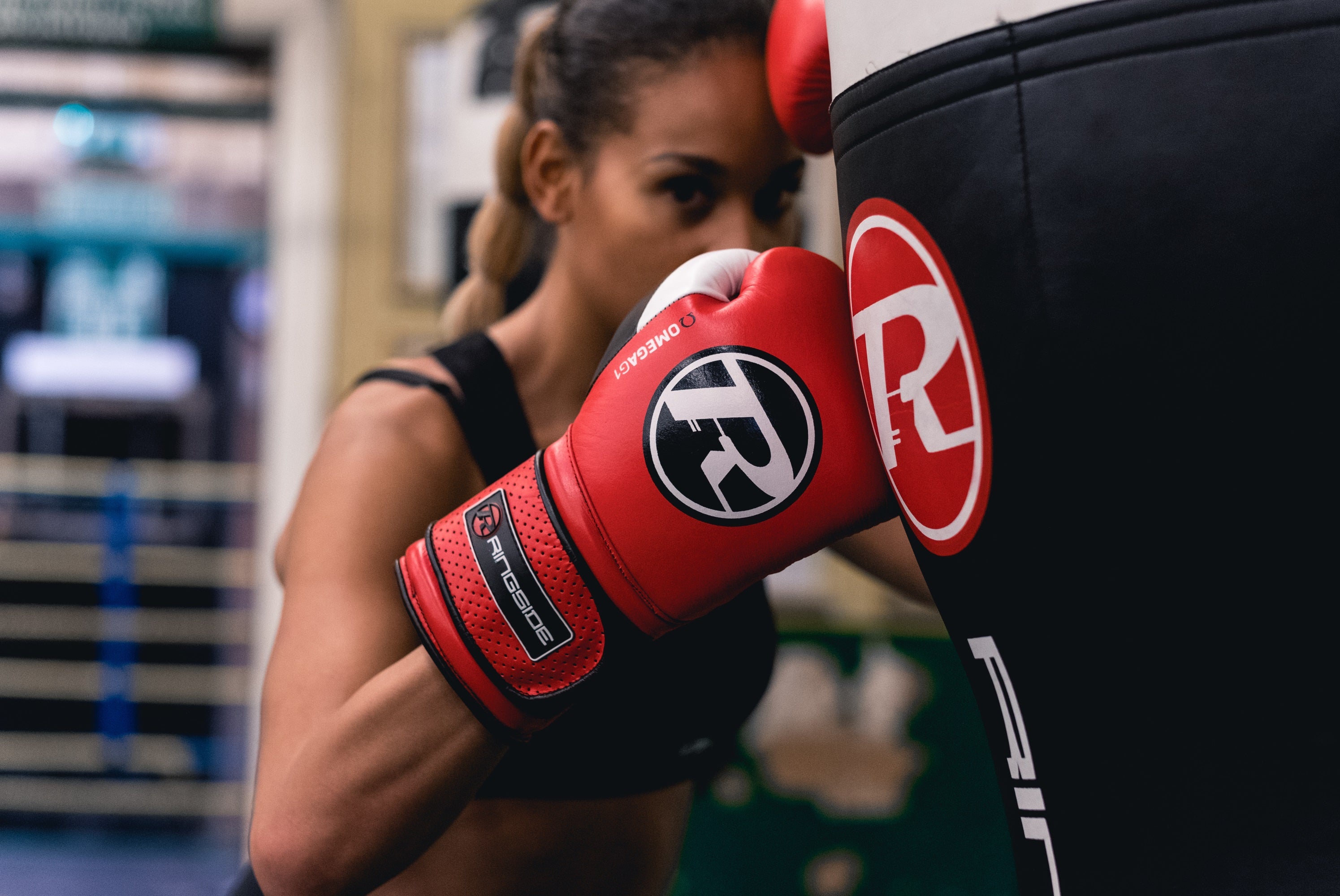
Mastering the Basics with the Right Boxing Gloves
Table of Contents
- Understanding Boxing Glove Ounce Weights
- Different Types of Boxing Gloves
- Materials Used in Boxing Gloves
- Care Tips for Boxing Gloves
- Additional Factors to Consider
- Benefits of Investing in Quality Gloves
- Common Mistakes to Avoid
- Conclusion: Choosing The Right Boxing Gloves
- Further Reading on Boxing Training Techniques:

Boxing, one of the world's oldest and most celebrated sports, has evolved significantly over the centuries. From bare-knuckle brawls to the sophisticated matches of today, the sport has witnessed numerous transformations. A crucial element in this evolution has been the introduction and refinement of boxing gloves.
The Greeks, for instance, used leather straps called "himantes" to protect their hands and wrists during bouts. However, it wasn't until the late 19th century that the modern padded boxing gloves, as we know them, began to take shape. These gloves were introduced not just to protect the hands of the puncher, but more importantly, to safeguard the opponent from severe injuries.
Choosing the right boxing gloves is not merely a matter of personal preference; it's a critical decision that can influence one's safety and performance in the ring. With a host of options available today, from different materials to various weights, it's essential to be well-informed. This article aims to guide you through the nuances of selecting the perfect boxing gloves, ensuring both safety and optimal performance for your next session.
Understanding Boxing Glove Ounce Weights

The term "ounce" in boxing gloves might sound a bit unfamiliar to newcomers. However, it's a fundamental aspect of glove selection that every boxer, whether amateur or professional, should grasp. The "ounce" refers to the weight of the glove, which directly correlates to the amount of padding and protection it offers.
Significance of the "ounce" in boxing gloves
The weight of a boxing glove determines its primary use. Heavier gloves tend to have more padding, offering increased protection for both the wearer and their sparring partner. Conversely, lighter gloves have less padding, making punches more impactful, which is why they're typically reserved for professional bouts.
Common ounce weights and their applications:
- 8oz and 10oz: These are lighter gloves primarily used in professional fights. They allow for faster punches but offer less protection due to their reduced padding.
- 12oz: A versatile weight, 12oz gloves are often chosen for training and sparring. They strike a balance between protection and mobility.
- 14oz and 16oz: These are the heavyweights of the boxing glove world. With ample padding, they're ideal for training sessions, especially sparring, where safety is paramount.
Choosing the right ounce weight based on individual needs
The ideal glove weight varies depending on the boxer's primary activity and personal preference. For instance, those focusing on bag work might opt for 10oz or 12oz gloves for a balance of speed and protection. In contrast, those regularly sparring should consider 14oz or 16oz gloves to ensure maximum safety for both themselves and their partners.
Understanding the ounce weight of boxing gloves is crucial. It not only influences the effectiveness of one's training but also plays a pivotal role in preventing injuries. As with all boxing equipment, it's essential to prioritise safety, ensuring that the gloves align with one's training goals and activities.
Different Types of Boxing Gloves
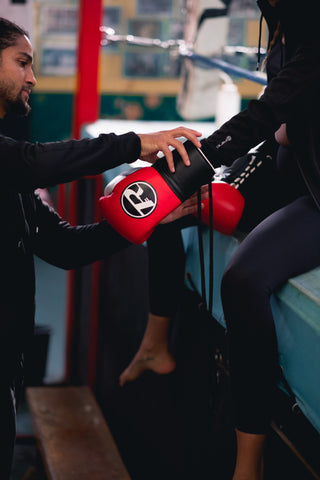
Boxing gloves are not a one-size-fits-all piece of equipment. Depending on the specific activity or purpose, there are various types of gloves designed to offer optimal performance and protection. Here's a breakdown of the primary types of boxing gloves and their specific uses:
Bag Gloves:
- Description: These gloves are specially designed for punching bags. They are typically lighter with less padding on the knuckles.
- Usage: Ideal for bag work, including heavy bags, speed bags, and double-end bags. Not recommended for sparring due to limited protection.
Training Gloves:
- Description: As the name suggests, these are all-purpose gloves suitable for various training activities.
- Usage: Great for both bag work and basic sparring. They offer a balance between weight, padding, and flexibility.
Sparring Gloves:
- Description: Designed with safety in mind, these gloves have extra padding, especially around the knuckles, to protect both the wearer and their sparring partner.
- Usage: Exclusively for sparring sessions. The added padding reduces the risk of causing injuries.
Fight Gloves:
- Description: These are the gloves used in professional boxing matches. They are lighter with less padding to make punches more impactful.
- Usage: Reserved for official bouts. Due to their design, they are not suitable for training or sparring.
Cardio Gloves:
- Description: Designed for fitness boxing classes, these gloves are lightweight with minimal padding.
- Usage: Suitable for aerobic boxing or fitness classes where there's no contact with an opponent. Not recommended for traditional boxing training or sparring.
The type of boxing glove one chooses should align with their training goals and activities. Whether you're hitting the bags, sparring with a partner, or stepping into the ring for a professional bout, there's a glove designed to meet your needs. Always prioritise safety and ensure that the glove type matches its intended use to get the most out of your boxing experience.
Materials Used in Boxing Gloves

The material of a boxing glove plays a pivotal role in its durability, comfort, and overall performance. Over the years, various materials have been used to craft boxing gloves, each with its own set of advantages and disadvantages. Here's a closer look at the most common materials used in today's boxing gloves:
Leather:
- Description: Natural leather, often cowhide or goatskin, is a traditional and widely respected material for boxing gloves.
- High durability: Can withstand rigorous training sessions and lasts longer.
- Offers a comfortable fit that moulds to the user's hand over time.
- Breathable, reducing sweat accumulation.
- Typically more expensive than synthetic alternatives.
- Requires regular maintenance to prevent drying out.
Synthetic Leather (e.g., Vinyl):
- Description: A man-made material designed to mimic the properties of natural leather.
- More affordable, making it a popular choice for beginners.
- Easier to clean and maintain.
- Less durable than natural leather.
- May not offer the same level of comfort or breathability.
Polyurethane:
- Description: A type of synthetic leather that's more advanced than basic vinyl.
- Strikes a balance between natural leather and vinyl in terms of durability and price.
- Resistant to water and UV rays.
- While more durable than vinyl, it may not last as long as natural leather.
- Can feel stiffer compared to natural leather.
The material of a boxing glove significantly influences its lifespan, comfort, and cost. While natural leather gloves are often hailed for their durability and fit, synthetic alternatives offer affordability and ease of maintenance. When selecting boxing gloves, it's essential to consider the material in relation to your budget, training frequency, and personal preferences.
Care Tips for Boxing Gloves
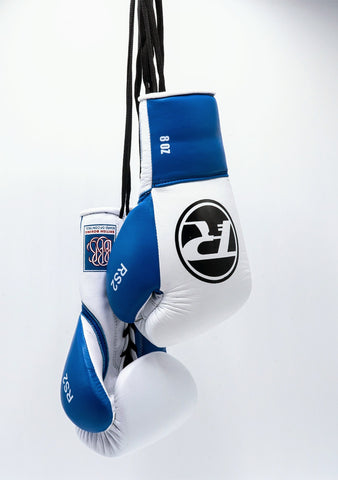
Boxing gloves, like any other sports equipment, require regular care and maintenance to ensure their longevity and performance. Proper care not only extends the life of the gloves but also ensures the safety of the user. Here are some essential care tips for boxing gloves:
Air Drying After Use:
- Importance: Sweat and moisture can lead to bacterial growth inside the gloves, leading to unpleasant odours and potential skin infections.
- Always air dry your gloves after each use.
- Avoid leaving them inside your gym bag or in a closed space.
- Hang them in a well-ventilated area or use glove deodorizers to speed up the drying process.
Regular Cleaning and Deodorizing:
- Importance: Regular cleaning prevents the buildup of bacteria and keeps the gloves smelling fresh.
- Wipe the exterior with a damp cloth after each use.
- For a deeper clean, use a mixture of water and mild soap. Avoid submerging the gloves in water.
- Use natural deodorizers like baking soda to keep the insides smelling fresh.
Proper Storage Away from Direct Sunlight:
- Importance: Direct sunlight can cause the material, especially leather, to dry out and crack.
- Store your gloves in a cool, dry place.
- Avoid placing them near heaters or in direct sunlight.
Conditioning Leather Gloves:
- Importance: Leather can dry out over time, leading to cracks and reduced durability.
- Use leather conditioners or oils to keep the material supple.
- Condition your gloves every few months or when they start to feel dry.
Regular Inspection for Wear and Tear:
- Importance: Damaged gloves can compromise safety during training or sparring.
- Regularly inspect your gloves for signs of wear, such as thinning padding or tears in the material.
- Replace gloves that show significant signs of wear to ensure safety.
Taking good care of your boxing gloves is an investment in your safety and the longevity of the equipment. By following these care tips, you can ensure that your gloves remain in top condition, providing optimal protection and performance for many training sessions to come.
Additional Factors to Consider
While the type, material, and weight of boxing gloves are essential considerations, there are other factors that can influence your boxing experience. These additional elements can make a significant difference in terms of comfort, safety, and overall glove performance. Here's a deeper dive into these factors:
Wrist Support and Closure Types:
- Importance: Proper wrist support can prevent injuries, especially during powerful punches or when blocking.
- Velcro Closure: Offers quick and easy adjustability, ideal for training sessions where gloves are frequently taken on and off.
- Lace-up Closure: Provides a more secure and snug fit, often preferred for professional bouts and sparring.
- Recommendation: Choose a closure type based on your activity and personal preference. For daily training, Velcro might be more convenient, while lace-up offers a tighter fit for competitive scenarios.
Inner Lining and Moisture-Wicking Properties:
- Importance: The inner lining affects comfort, and moisture-wicking properties can keep hands dry, reducing the risk of blisters and skin irritations.
- Moisture-Wicking Lining: Draws sweat away from the skin, keeping hands dry and comfortable.
- Breathable Mesh: Allows for better ventilation, reducing sweat accumulation inside the glove.
- Recommendation: Look for gloves with moisture-wicking linings or breathable mesh, especially if you train for extended periods or live in a humid climate.
Price-Quality Trade-offs:
- Importance: While everyone wants a good deal, it's essential to understand that, in many cases, you get what you pay for.
- Budget Options: While there are affordable gloves that offer decent quality, they might not last as long or provide the same level of protection as pricier alternatives.
- Investment in Quality: High-quality gloves might have a higher upfront cost, but they often offer better protection, comfort, and durability, making them cost-effective in the long run.
- Recommendation: Determine your budget and prioritise quality, especially if you're serious about boxing. Investing in a good pair of gloves can save you money in the long run and provide better protection.
When selecting boxing gloves, it's essential to look beyond the basics. Factors like wrist support, inner lining, and price-quality trade-offs play a crucial role in ensuring you get the best gloves for your needs.
Benefits of Investing in Quality Gloves
Safety Advantages:
- Importance: Quality gloves are designed with safety as a top priority, ensuring maximum protection for the hands and wrists.
- Enhanced padding reduces the risk of injuries during punches.
- Proper wrist support minimises the chances of sprains or strains.
- Quality materials ensure even distribution of impact, protecting knuckles and joints.
Durability and Long-Term Savings:
- Importance: High-quality gloves are built to last, offering durability that withstands rigorous training sessions.
- Less frequent replacements, leading to long-term savings.
- Resistant to wear and tear, ensuring consistent protection over time.
Enhanced Comfort and Fit:
- Importance: Quality gloves often come with better design and materials, ensuring a snug and comfortable fit.
- Moulds to the shape of the hand, offering a personalised fit.
- Breathable materials reduce sweat accumulation, enhancing comfort during extended training sessions.
Improved Training and Performance:
- Importance: Quality gloves can enhance training efficiency and overall boxing performance.
- Proper weight distribution allows for better punch accuracy.
- Enhanced grip and fit lead to improved technique and power.
Common Mistakes to Avoid
Not Diversifying Glove Use Based on Activity:
- Mistake: Using the same pair of gloves for all boxing activities, from bag work to sparring.
- Consequence: Reduced glove lifespan and potential safety risks.
- Solution: Invest in activity-specific gloves to ensure optimal performance and safety.
Overlooking Glove Damage:
- Mistake: Continuing to use gloves that show signs of wear, such as thinning padding or tears.
- Consequence: Compromised safety and increased risk of injuries.
- Solution: Regularly inspect gloves for damage and replace them when necessary.
Neglecting Regular Glove Maintenance:
- Mistake: Failing to clean and maintain gloves, leading to bacterial buildup and unpleasant odours.
- Consequence: Reduced glove lifespan and potential skin infections.
- Solution: Implement a regular cleaning routine and ensure gloves are dried properly after each use.
Investing in quality boxing gloves offers numerous benefits, from enhanced safety to improved performance. However, it's equally important to avoid common mistakes to ensure the longevity and effectiveness of the gloves. By recognising the value of quality gloves and being mindful of their maintenance, boxers can ensure a safe and efficient training experience.
Conclusion: Choosing The Right Boxing Gloves
Boxing, as a sport and fitness regimen, demands not only physical prowess but also the right equipment to ensure safety and effectiveness. Central to this equipment list are boxing gloves, which play a pivotal role in every boxer's journey, from the novice to the professional.
Throughout this guide, we've delved deep into the intricacies of boxing gloves, from their types and materials to the benefits of investing in quality pairs. The importance of informed glove selection cannot be overstated. The right gloves not only protect the hands and wrists from potential injuries but also enhance the overall boxing experience, ensuring comfort, durability, and optimal performance.
However, merely selecting the right gloves isn't the end of the journey. Regular maintenance, timely replacements, and understanding the specific uses of each glove type are equally crucial. Overlooking these aspects can lead to reduced glove lifespan, compromised safety, and even hindered performance.
As we conclude, we'd like to encourage all our readers to prioritise quality and care in their boxing journey. Remember, your gloves are an extension of your hands in the ring or during training. Treat them with the respect they deserve, and they'll serve you well in return. Whether you're just starting out or have been boxing for years, always strive for informed decisions, quality investments, and diligent care when it comes to your boxing gloves.
Ready to Elevate Your Boxing Experience?
Choosing the right boxing gloves is just the beginning. For a comprehensive range of top-quality boxing equipment, expert advice, and unbeatable deals, visit Ringside Boxing.
Whether you're a beginner or a seasoned pro, Ringside Boxing has everything you need to take your training to the next level. Don't compromise on quality; choose the best gloves for your boxing journey.
___________________________________________
Further Reading on Boxing Training Techniques:
The Beginner's Guide to Boxing Training - Muscle & Fitness
This guide provides beginners with essential tips and techniques to start their boxing training journey. From stance to punches, it covers the basics to ensure a strong foundation. Read more
The BEGINNER'S Guide to Boxing - Expert Boxing
A comprehensive guide that offers advice from various angles, ensuring that beginners get a holistic understanding of boxing. It emphasises the importance of seeking tips and learning from different sources. Read more
How to Train Like a Boxer COMPLETE BEGINNER'S GUIDE - Fight Camp Blog
This article delves into the different workout training techniques that boxers utilise to optimise their performance. It provides insights into common practices and routines followed by professional boxers. Read more

